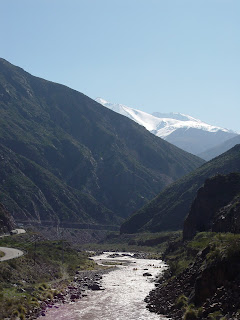La revista norteamericana Forbes escribe que la elite estadounidense ya no busca lugares tradicionales para las vacaciones como Londres, Paris, Roma, y Hawaii. ¿Dónde van los ricos ahora? ¡Argentina!
“En Argentina, la gente sabia satisface sus deseos enófilos en Mendoza, una región fértil con bodegas que queda dos horas en avión de Buenos Aires. Con la atención internacional que recibe la Argentina sobre su vino y los hoteles lujosas como el Cavas Wine Lodge, que abrió en 2005, que ofrece alojamientos exclusivos, los viajadores concluyen que esta región vale la pena para visitar.”

Los que marcaron las tendencias de visitar la Argentina fueron los enófilos y los “sofistonautas” que ya conocía Napa, California y ya habían visitado a Francia y Italia. La combinación de la devaluación del peso en 2002 y la continuidad de la debilidad del dólar en comparación al euro creó la oportunidad de conocer una parte del mundo desconocido y una región vitivinícola nueva. Los empresarios en Mendoza respondieron a la demanda con alojamientos lujosos hechos para estos sofistonautas.
Muchas turistas de vino que viajan a Mendoza quieren pasar al menos una noche y un día en Buenos Aires. Recomiendo 1555 Malabia House, ubicado en el barrio Palermo Soho, que es muy fashion ahora. Mi hermano quedó allí el diciembre pasado y le encantó. El staff es muy amable, el chef hace lo que quiere para el desayuno cada mañana, se puede caminar a muchos restaurantes muy buenos, y las habitaciones son muy lindas. También, no es muy caro para lo que es – US$140 por una noche.
Si sos un enófilo, tal vez deberías alojarse en la Mansión Vitraux Hotel Boutique y Wine Lounge en el barrio San Telmo. No tengo experiencia personal allí, pero es relativamente nuevo y está en un barrio que está muy cerca de la Plaza de Mayo (Casa Rosada, Banco Central, Catedral, Ministerio de Economía, etc.) y Puerto Madero. También hay algunos restaurantes buenos en San Telmo y el mejor shopping de antigüedades en Buenos Aires.

También, he leído buenas criticas del Bobo (a la derecha), que está en Palermo como 1555 Malabia House.
Para las criticas de restaurantes de Buenos Aires, lea Guía Óleo y si lee ingles, hay un enorme lista de criticas en el blog de Dan Perlman, un dueño norteamericano de un restaurante en Buenos Aires.
Cuando llega a Mendoza después de un vuelo de dos horas desde Buenos Aires, tiene muchas opciones para el alojamiento lujoso. Probablemente el más lujosa afuera de la ciudad de Mendoza es el Cavas Wine Lodge. Pero si no quiere gastar US$300 por cada noche, no vayas a su sitio del web porque la tentación de hacer una reservación será muy fuerte. Hay una bodega en el lodge y las habitaciones tienen una vista hermosa de los Andes. Parece espectacular.
Un sitio bueno para buscar lugares para alojarse es BestOfMendoza.com. Este sitio es una colección de hoteles, bodegas, y restaurantes de primera categoría. No va a equivocarse con lugares que están en su sitio.
Para concluir, aquí es un resumen de algunos de los lugares de “Best of Mendoza.”
Hotel Piscis Las Leñas
Si te gusta esquiar y vivís en el hemisferio norte, ven en el Julio para disfrutarse en los Andes.
Estancia Rancho’e Cuero
Si querés ser un gaucho durante el día pero vivir en la modernidad, este estancia es para vos.
Bodega Salentein
Para los que quieren dormir al lado de la vid.
Park Hyatt Mendoza
Ubicado en la ciudad de Mendoza, no podés equivocarte en este hotel glamoroso (foto abajo).

Articulo: "Status-Symbol Trips." Por Shivani Vora. Forbes.com. 23 de mayo, 2007.
















